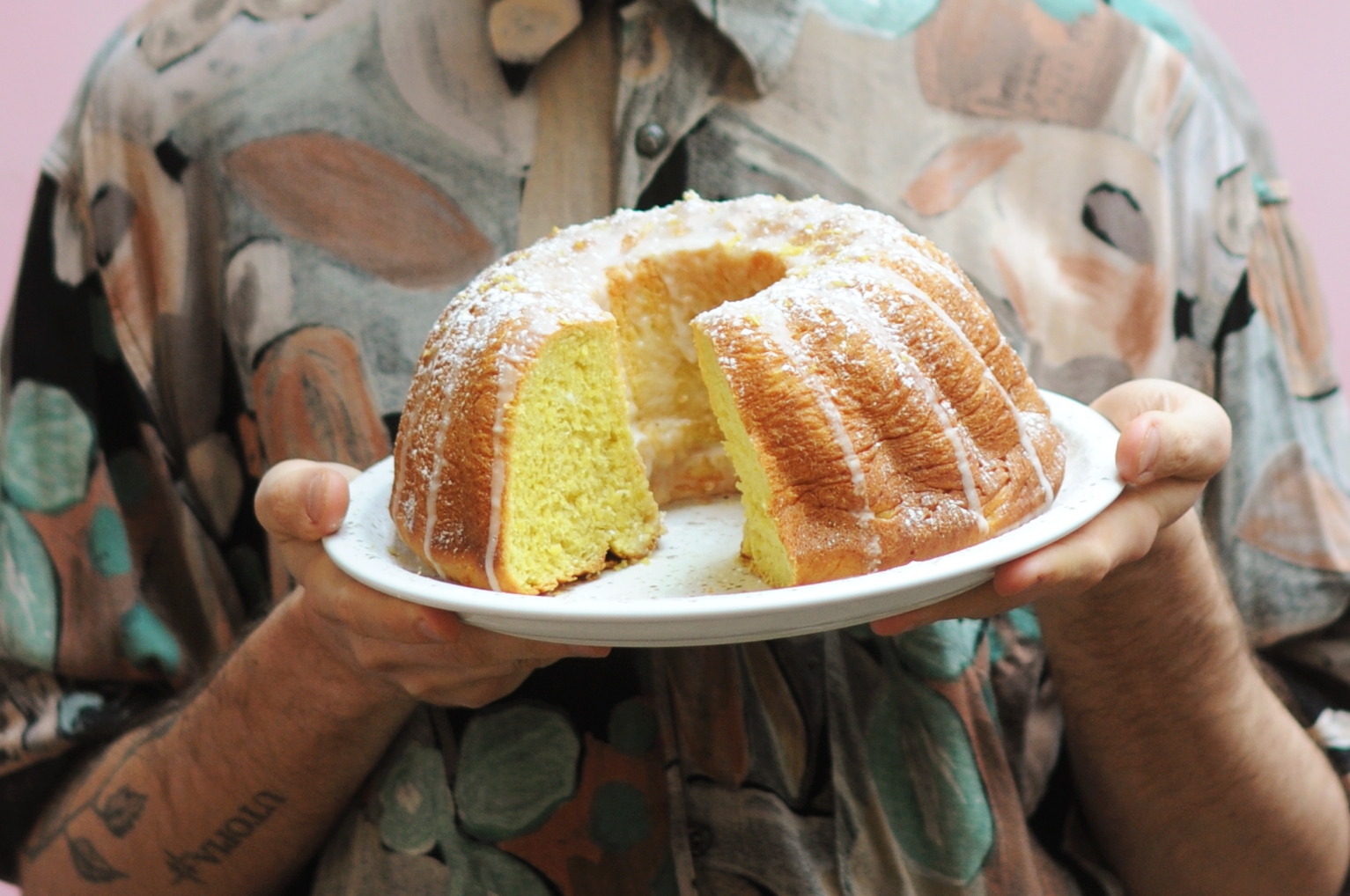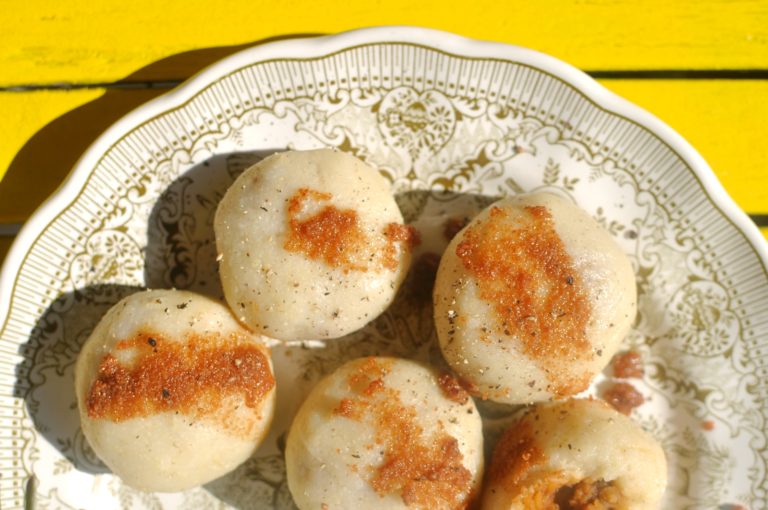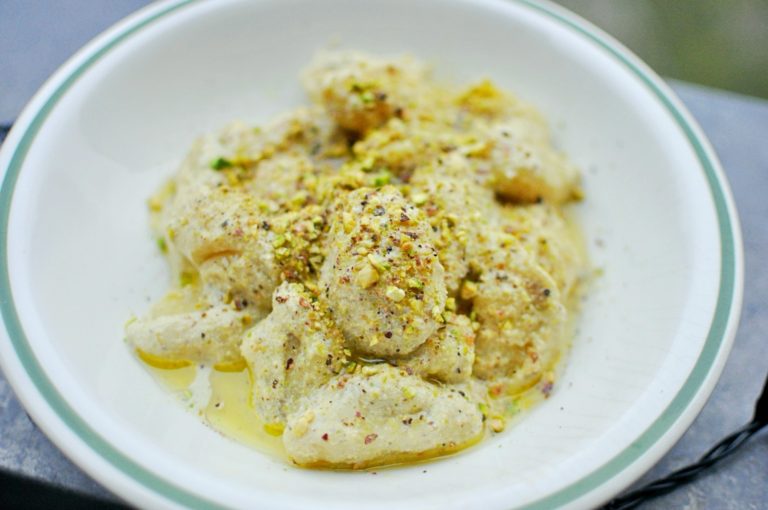Vegan lemon BABKA cake! (Polish Easter cake)

Here it is: the vegan version of the queen of the Easter table. I think that it is worth preparing such a cake not only for holidays… And since this particular cake reminds me the most of the beginning of spring, I can confidently say that it is also the spring queen of the table. With a large addition of zest and lemon juice and beautifully yellow. Delicate, fluffy, full-risen, delicious yeast Babka.
The preparation of this dough is very easy, although the process consists of several stages and, as it happens with yeast baking, you should be patient. I must admit that I still cannot understand the surprise: How is this possible… a vegan babka cake? With no eggs and milk? Can it be tasty? Sure it can! I would even say that it is a simpler recipe than its egg and milk counterpart. Since the yeast produces beautiful pizza dough, focaccia, or even traditional bread, so why should it go wrong with a sweet, lemon cake?
Vegan lemon BABKA cake! (Polish Easter cake)
Recipe for a fluted ring cake tin with a diameter of ~ 25cm or a loaf tin with dimensions of 30x10cm
- 500g wheat flour
- 7g instant dry yeast (follow the proofing instructions on the box)
- 1 tsp salt
- 100g coconut oil or vegan margarine
- 1 large lemon (grated zest and squeezed juice from the whole fruit)
- 3/4 cup of sugar
- 250ml / 1 cup of milk (I recommend soy)
- 2 tsp of sugar with vanilla or a little bit of vanilla extract
- 1/2 tsp turmeric
- a little oil to grease the hands and the kneading tableSugar frosting:
- 1/2 cup powdered sugar
- A good pinch of salt
- 3 tbsps lemon juice
- additional lemon zest to decorate the cake
- In a saucepan, put the oil or margarine with the zest of one lemon. While heating over low heat, dissolve the oil and let the lemon peel “fry” in it for 2-3 minutes. Thanks to this, the oil will acquire a lemon aroma.
- After removing the saucepan from the heat, add the following ingredients to the dissolved oil: sugar, milk, turmeric and lemon juice. Mix everything thoroughly.
- Prepare flour in a large bowl. Add yeast and salt to it. Mix. Pour all the wet ingredients into the flour and, using a spatula or greased hands, knead a slightly shapely ball of dough. Knead it for a minute, until the ingredients are fully combined. Cover the bowl with a cloth and let it rest for 10 minutes.
- Pour a little oil onto the kitchen counter and spread it with your hand to prepare oily knead area. Take the dough and knead with greased hands for 30 seconds. Form it into a ball, transfer it back to the bowl, cover it again, and leave for 10 minutes. Repeat this process two more times, giving the dough 10 minutes breaks. After the third knead, form the dough into a ball again, put it back in the bowl, cover, and leave for 45-60 minutes.
- Prepare the baking tin and lightly grease its sides and the bottom with some oil. Transfer the dough for the last time on the kitchen counter and with greased hands, try to form it to the shape of the tin. Fill the baking tin and leave the dough for final rise for 90 minutes.
- Heat the oven to 180℃. Bake babka for 25 minutes – the top of it should be beautifully golden. Take the baked cake out of the tin, and place it upside down to cool down… at least a bit.
Sugar frosting
- Sift the powdered sugar into a bowl and mix it thoroughly with the juice and salt. The icing should be really thick.
- Pour the icing over the cooled cake. Sprinkle with some more lemon zest.
- Yeast cakes taste best within 24 hours after baking. It is worth eating a slightly warm cake, cutting a few pieces and sharing it!
- The „babka” fluted ring cake tin is a cool thing (especially if it is decorative), because the cake looks special, but you can actually use a „regular” cake pan – the same as for baking bread, for example.
- If the lemon you’re using is small, or you want a really strong lemon flavour, feel free to use the zest and juice of two lemons.



